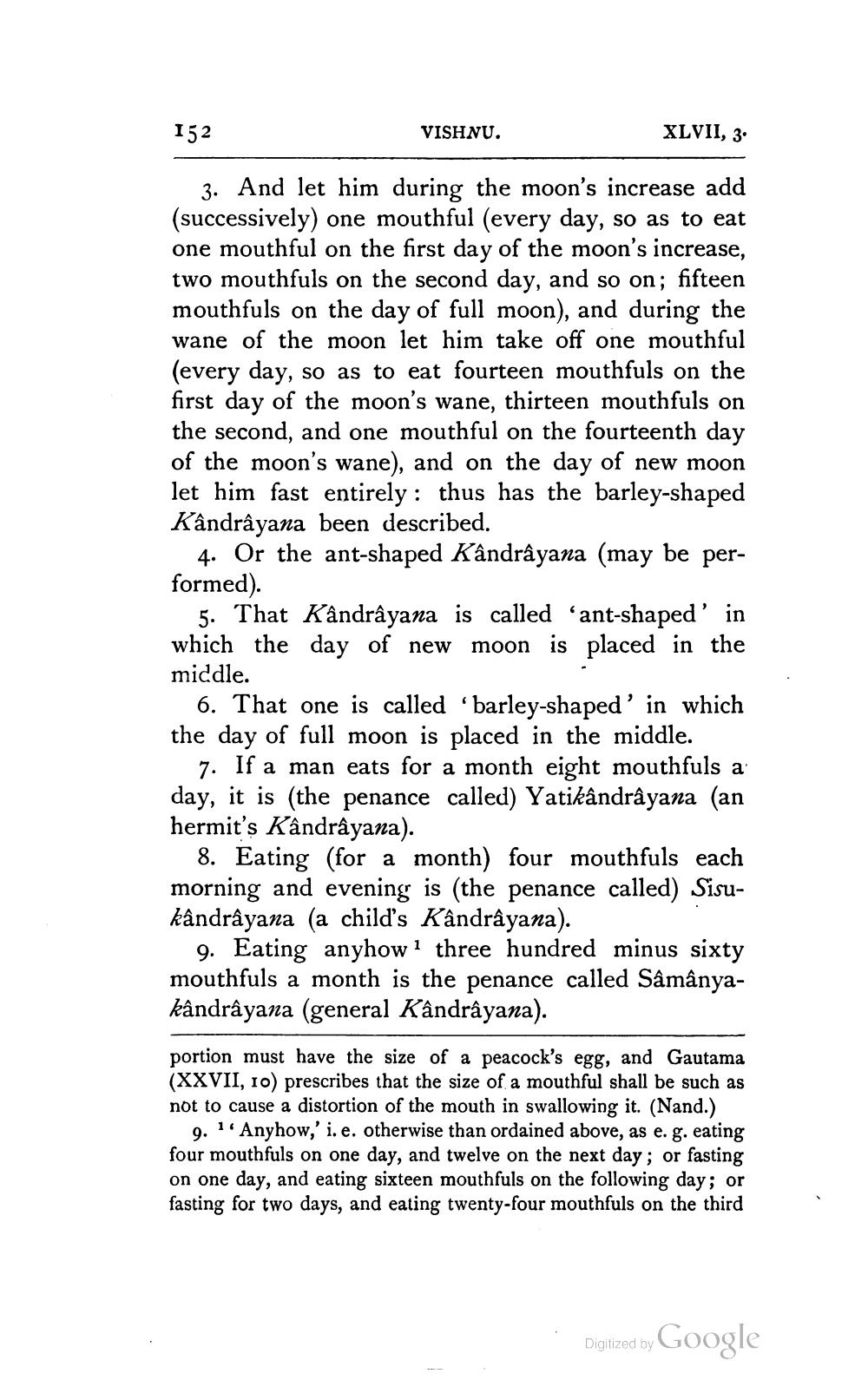________________
152
VISHNU.
XLVII, 3.
3. And let him during the moon's increase add (successively) one mouthful (every day, so as to eat one mouthful on the first day of the moon's increase, two mouthfuls on the second day, and so on; fifteen mouthfuls on the day of full moon), and during the wane of the moon let him take off one mouthful (every day, so as to eat fourteen mouthfuls on the first day of the moon's wane, thirteen mouthfuls on the second, and one mouthful on the fourteenth day of the moon's wane), and on the day of new moon let him fast entirely : thus has the barley-shaped Kândrayana been described.
4. Or the ant-shaped Kândrâyana (may be performed).
5. That Kândrayana is called "ant-shaped' in which the day of new moon is placed in the middle.
6. That one is called 'barley-shaped' in which the day of full moon is placed in the middle.
7. If a man eats for a month eight mouthfuls a day, it is (the penance called) Yatikândrayana (an hermit's Kândrayana).
8. Eating (for a month) four mouthfuls each morning and evening is (the penance called) Sisukândrayana (a child's Kândrayana).
9. Eating anyhowl three hundred minus sixty mouthfuls a month is the penance called Sâmânyakândrayana (general Kândrayana).
portion must have the size of a peacock's egg, and Gautama (XXVII, 10) prescribes that the size of a mouthful shall be such as not to cause a distortion of the mouth in swallowing it. (Nand.)
9. 1. Anyhow,' i.e. otherwise than ordained above, as e. g. eating four mouthfuls on one day, and twelve on the next day; or fasting on one day, and eating sixteen mouthfuls on the following day; or fasting for two days, and eating twenty-four mouthfuls on the third
Digitized by
Digitized by Google




